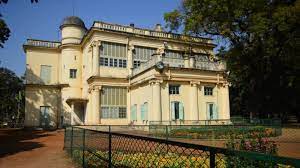Santiniketan, the tranquil and culturally rich town in West Bengal, India, has earned its place on the prestigious UNESCO World Heritage List, marking a significant milestone in the preservation of the legacy of Rabindranath Tagore. The announcement of Santiniketan’s inclusion in this coveted list is not just a recognition of its historical and cultural significance but also a celebration of Tagore’s enduring influence on the world. In this article, we will explore the reasons behind Santiniketan’s UNESCO recognition and delve into the cultural tapestry that makes this place so unique. In May this year, Union Minister G Kishan Reddy announced the proposal to include the site in the UNESCO World Heritage List. He tweeted: ” UNESCO World Heritage Centre’s advisory body ICOMOS has recommended Santiniketan in West Bengal to be included in the World Heritage List.”
The Significance of Santiniketan
Santiniketan, which translates to “Abode of Peace,” was established by the renowned polymath Rabindranath Tagore in the late 19th century. It began as an experimental school, later evolving into Visva-Bharati University in 1921. The institution was founded on the principles of combining Indian and Western education systems and fostering a holistic, harmonious approach to learning. Santiniketan was conceived as a place where students could interact with nature, engage in open-air classes, and learn from the world around them.
https://x.com/MamataOfficial/status/1703412671247450227?s=20
UNESCO Recognition
Santiniketan’s inscription on the UNESCO World Heritage List acknowledges its unique role in the fusion of art, culture, and education. The official statement from UNESCO highlights Santiniketan as “an exceptional example of a place of learning in the late 19th and early 20th centuries,” recognizing the university’s commitment to nurturing the creative spirit of its students and promoting an environment of harmony with nature.
Architectural and Natural Wonders
Santiniketan is not only about its educational legacy but also boasts architectural and natural marvels. The campus is home to iconic buildings like Kala Bhavan, designed by the illustrious architect Nandalal Bose, and the Uttarayan Complex, Tagore’s residence. The town is surrounded by the lush beauty of nature, with avenues lined with trees, tranquil ponds, and vibrant gardens, making it a haven for artists and nature enthusiasts alike.
Cultural Festivals and Traditions
Santiniketan is famous for its vibrant cultural festivals, most notably the “Poush Mela” and “Rabindra Jayanti.” Poush Mela, held in December, celebrates the harvest season with music, dance, and traditional Bengali handicrafts. Rabindra Jayanti, on the other hand, marks Tagore’s birth anniversary and is a time when the entire town comes alive with performances of his songs and dances.
With Santiniketan’s inclusion in the UNESCO World Heritage List, there comes a greater responsibility to preserve its unique heritage. Efforts to maintain the campus, protect its historical buildings, and promote Tagore’s educational philosophy have gained renewed importance. The UNESCO recognition also brings increased tourism, offering opportunities for visitors to immerse themselves in the world Tagore created.
Santiniketan’s addition to the UNESCO World Heritage List is a tribute to the enduring legacy of Rabindranath Tagore and the exceptional educational and cultural institution he founded. It stands as a testament to the vision of a man who believed in the power of education, creativity, and the harmonious integration of humans with nature. As the world celebrates this honor, Santiniketan continues to be a source of inspiration for generations to come, embodying the principles of peace, education, and artistic expression.



